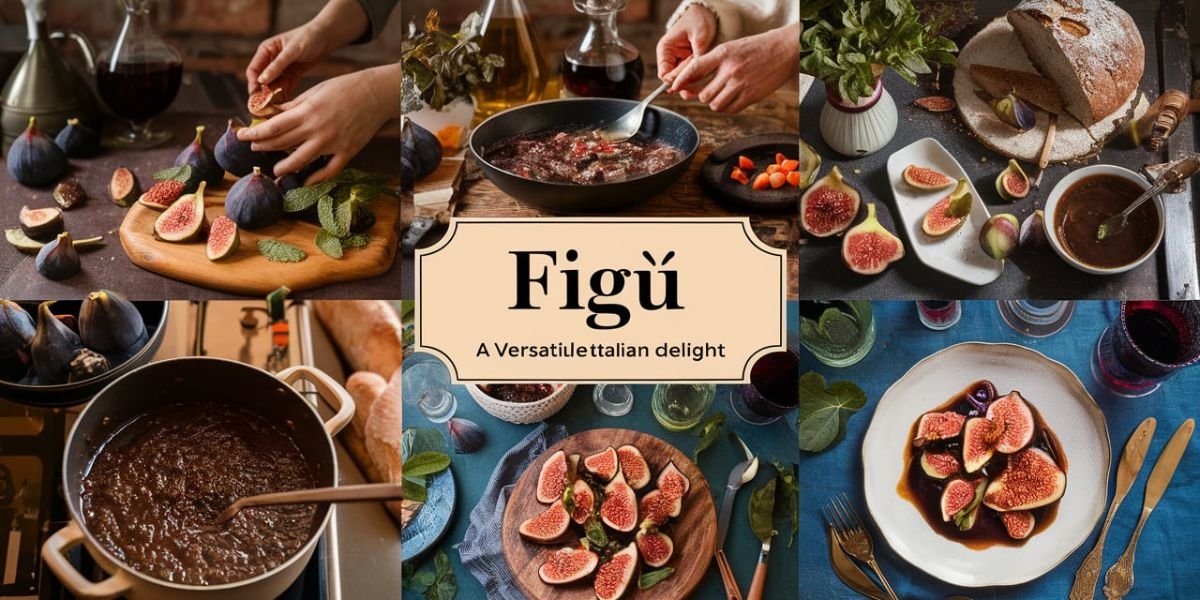Figù: A Versatile Italian Delight

Introduction
Figù – or otherwise known as Italian delight has become the favorite dish of consumers and gourmands all over the world. This condiment is interesting, frugal, and strangely unseen: in fact, it lends a certain richness and flavor to numerous kinds of food. Here in this article, we will introduce this food figù, including its features, uses, and functions in food and potential health advantages.
What is Figù?
Figù” – the English equivalent for this term is ‘figs’, FIGS is an abbreviation for the sweet and tender fruit which is grown in the fig tree. These small, round, pear-shaped fruits, are famous for their intense fruity taste increased by their succulent, semi-gelatinous texture. Figs are of different colors such as green, purplish and black though they all have somewhat different taste and smell.
A Brief History
It’s not surprising that figs are among the oldest fruits known to man: people have been growing them for at least 5 thousand years. In many of the prehistoric societies they symbolized fertility and richness. Currently, figs are cultivated in many nations of the globe such as Italy, Turkey, Greece, and California.
Nutritional Value of
These are not only delicious but also packed with essential nutrients. They are an excellent source of fiber, vitamins, and minerals. Some of the key nutrients found in figs include:
- Fiber: Promotes digestive health and helps regulate blood sugar levels.
- Potassium: Essential for heart health and blood pressure regulation.
- Calcium: Supports bone health and muscle function.
- Vitamin A: Promotes good vision and immune function.
- Vitamin K: Essential for blood clotting.
Types of
There are several varieties of figù available, each with its own unique characteristics:
- Fresh Figs: Enjoyed for their juicy sweetness and delicate flavor.
- Dried Figs: Concentrated sweetness and chewy texture.
- Fig Jam: Versatile spread for toast, pastries, and desserts.
- Fig Syrup: Sweet and syrupy, perfect for drizzling over ice cream or pancakes.
Culinary Uses
It is a versatile ingredient that can be used in both sweet and savory dishes. Here are some popular ways to enjoy it:
- Appetizers: Fig and prosciutto wrapped in Parma ham, fig and goat cheese crostini.
- Main Courses: Fig and balsamic glaze reduction for roasted pork, fig and blue cheese salad.
- Desserts: Fig tart, fig and chocolate cake, fig ice cream, fig-infused cocktails.
Why It is Popular in Italy
Cultural Significance
Figs have been grown in the Mediterranean for ages, and figs occupy a very important place in Italy, or rather, in Italian people’s lives. Figù, as a dish, then is quite telling of the natural commonsensical Italian approach to food – procuring what’s available and making something out of it.
Regional Variations
Different regions in Italy have their own versions of Figù, each with unique twists. For example:
- Tuscany: In Tuscany, It is often made with a splash of red wine for added richness.
- Sicily: It is known for its incorporation of almonds and honey, reflecting the island’s Arabic influences.
Seasonal Delight
In Italy, it is often enjoyed during the late summer and early fall when figs are in season. However, the use of dried figs means that Figù can be made and enjoyed year-round.
Health Benefits
Rich in Nutrients
Figs are a nutrient-dense fruit, rich in vitamins such as Vitamin A, Vitamin C, and Vitamin K. They are also a good source of minerals like potassium, magnesium, and calcium, which are essential for bone health.
High in Fiber
The high fiber content in figs promotes healthy digestion. Eating it can help maintain a healthy gut, prevent constipation, and support weight management by promoting a feeling of fullness.
Antioxidant Properties
Figs contain antioxidants that help protect the body from oxidative stress and inflammation. These antioxidants contribute to overall health and may reduce the risk of chronic diseases.
FAQs
What is Figù?
It is a traditional Italian dessert made from figs, sugar, and lemon juice. It can be served as a compote, used in baking, or incorporated into savory dishes.
Is it healthy?
Yes, it is a healthy option, especially when made with minimal added sugar. Figs are rich in vitamins, minerals, and fiber, offering numerous health benefits.
Can I use dried figs to make this?
Yes, dried figs can be used to make this. Soak them in warm water to rehydrate before cooking.
What dishes can I make with this?
it can be used in a variety of dishes, both sweet and savory. Popular options include tarts, glazes for meats, and as a topping for cheese or yogurt.
How long does it last?
When stored in an airtight container in the refrigerator, it can last up to a week. It can also be frozen for longer storage.
Conclusion
It is so simple it reminds me much of the best of Italian cuisine, characterized by simplicity, efficiency and a heavy dose of tradition. It can be tasted on its own, after a meal as a desert, as a sauce for other dishes; and gives a true taste of Italy. Because of its nutritional values, social value, and other pluses, it is one versatile cuisine item that ought to find its place in our kitchen.
Incorporating Figù into your diet is easy as Figù allows you to add its products into any of your recipes you like due to its versatility, and brings a touch of Italian cooking into your kitchen. It is examplary for a layman, and especially a new cook to prepare, not forgetting the joy of preparing food with family and friends.

